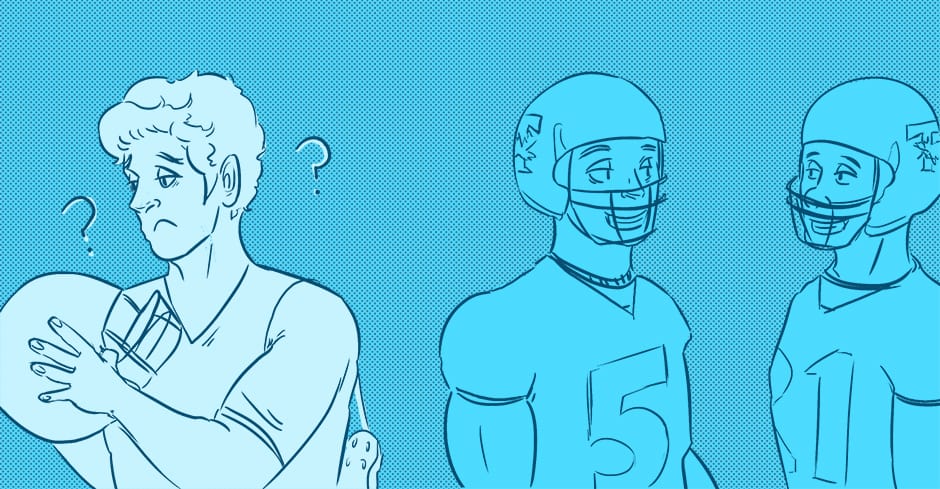A university football team’s success can usually be traced back to the quality of the players that previous recruitment drives attracted. This makes recruitment a high stakes pursuit, with numerous schools competing for the same top prospects.
YouTube is cluttered with highlight videos made by high school football players, but head coach & management of football operations, Greg Gary says that the team still relies on traditional means of evaluating talent. He says that “[the] OVFL [Ontario Varsity Football League] is a really good place to identify… up and coming good football players in Southern Ontario.”
The Varsity Blues also rely on grassroots relationships with high school coaches across the country to connect with incoming prospects.
Top recruits are often contacted by interested coaches in their second year of high school, and interested coaches follow their athletic development closely, according to first-year student Mac VanDuzer, who was recruited to the Blues but was not ultimately granted a place on the team.
Scholarships are usually offered between December and January, after an athlete completes his final high school football season. These scholarships are dependent on the player maintaining a minimum academic average and making the football team, which is not guaranteed.
Gary notes that first-year athletes occasionally withdraw from varsity football after realizing the academic pressures of being a full-time university student. This results in a loss of their athletic scholarship.
Along with other teams in the Ontario University Athletics (OUA) Conference, the University of Toronto faces an uphill battle in attracting athletes with scholarship money. The conference’s rules stipulate that Athletic Financial Awards (AFA) awarded to a player cannot aggregate to more than $4,000 per year.
This maximum value is unique to the OUA, as all other CIS conferences are free to award the full cost of tuition to incoming athletes. Additionally, OUA players must maintain a 70 per cent average in order to renew their AFA’s while athletes in the other three Canadian conferences need only a 65 per cent average.
Despite the financial restrictions, Gary believes that the University of Toronto’s academic reputation is a unique factor that draws top student athletes. “If you’re a serious student athlete, this is where you want to be,” says Gary.
VanDuzer explains, “What drew me to the University of Toronto was the way their football program works alongside the academic programs in order to ensure that students are taking their schooling at least as seriously as their athletic careers.”
Convincing prospective athletes to look past the Varsity Blues football team’s recent losing records was an early challenge for Gary when he was promoted to the head coach position in 2011. Gary admits that this legacy presented an obstacle in attracting top level recruits. “The initial aim was just trying to stabilize the program and just bring in recruits,” he says.
He went on to say that the team’s 4–4 record in 2013 has improved relations with possible recruits. “I think our program, with the 4–4, I think that made it easier to recruit,” says Gary.
OUA teams also have to compete with American universities to keep football recruits in Canada despite the heightened popularity and financial resources of NCAA teams.
In an attempt to expand its national visibility, the CIS signed a 2013 deal with Rogers Sportsnet to broadcast an expanded array of Canadian university sports, including the Vanier Cup. Gary explains, “I think the CIS has done a great job of promoting their product.”
Although the Varsity Blues football season is over, their success in future years will be founded in their current efforts to attract the 2017 class of recruits.


